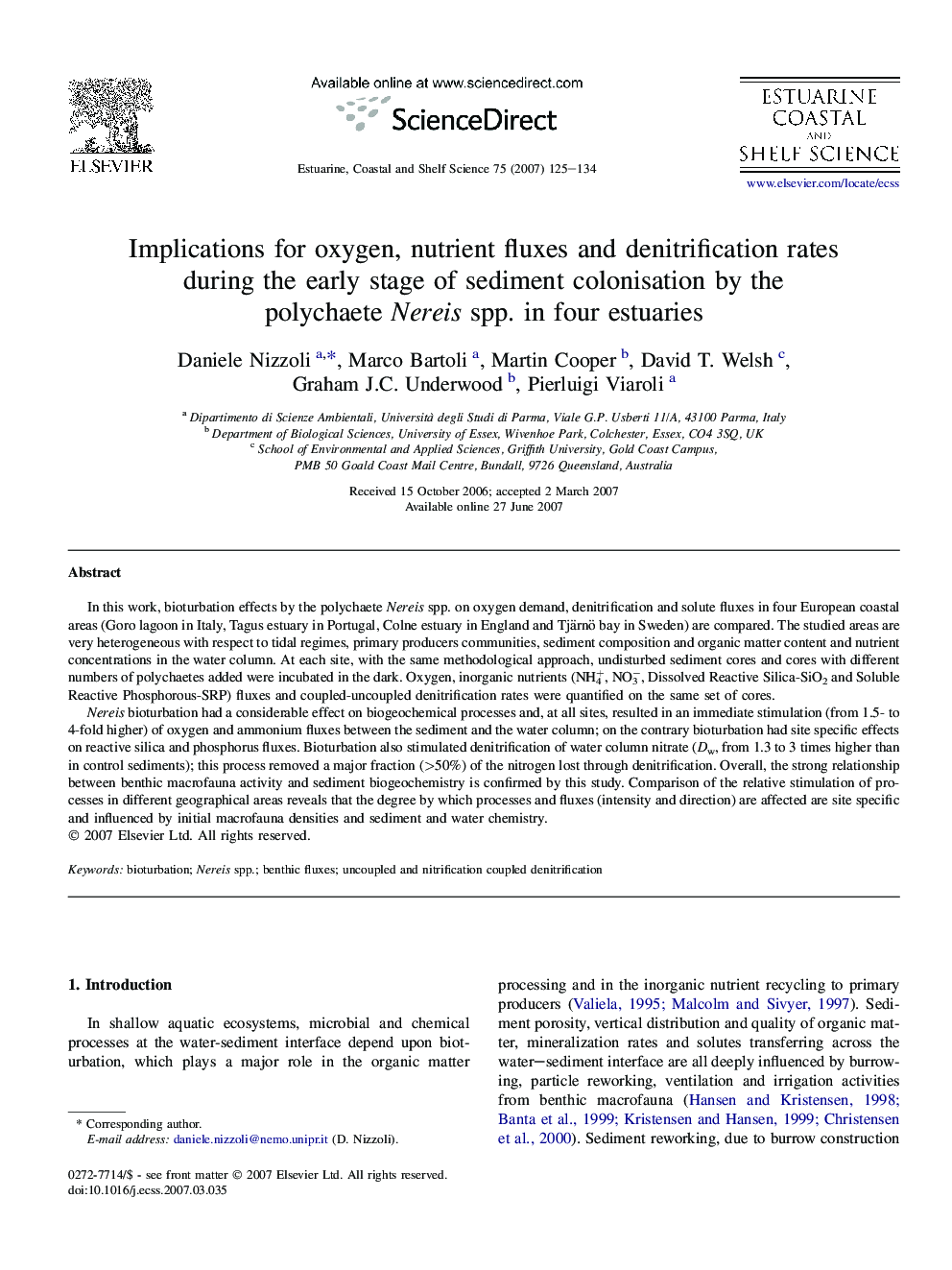| Article ID | Journal | Published Year | Pages | File Type |
|---|---|---|---|---|
| 4541727 | Estuarine, Coastal and Shelf Science | 2007 | 10 Pages |
In this work, bioturbation effects by the polychaete Nereis spp. on oxygen demand, denitrification and solute fluxes in four European coastal areas (Goro lagoon in Italy, Tagus estuary in Portugal, Colne estuary in England and Tjärnö bay in Sweden) are compared. The studied areas are very heterogeneous with respect to tidal regimes, primary producers communities, sediment composition and organic matter content and nutrient concentrations in the water column. At each site, with the same methodological approach, undisturbed sediment cores and cores with different numbers of polychaetes added were incubated in the dark. Oxygen, inorganic nutrients (NH4+, NO3−, Dissolved Reactive Silica-SiO2 and Soluble Reactive Phosphorous-SRP) fluxes and coupled-uncoupled denitrification rates were quantified on the same set of cores.Nereis bioturbation had a considerable effect on biogeochemical processes and, at all sites, resulted in an immediate stimulation (from 1.5- to 4-fold higher) of oxygen and ammonium fluxes between the sediment and the water column; on the contrary bioturbation had site specific effects on reactive silica and phosphorus fluxes. Bioturbation also stimulated denitrification of water column nitrate (Dw, from 1.3 to 3 times higher than in control sediments); this process removed a major fraction (>50%) of the nitrogen lost through denitrification. Overall, the strong relationship between benthic macrofauna activity and sediment biogeochemistry is confirmed by this study. Comparison of the relative stimulation of processes in different geographical areas reveals that the degree by which processes and fluxes (intensity and direction) are affected are site specific and influenced by initial macrofauna densities and sediment and water chemistry.
